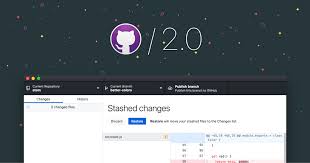Upgrade & Secure Your Future with DevOps, SRE, DevSecOps, MLOps!
We spend hours on Instagram and YouTube and waste money on coffee and fast food, but won’t spend 30 minutes a day learning skills to boost our careers.
Master in DevOps, SRE, DevSecOps & MLOps!
Learn from Guru Rajesh Kumar and double your salary in just one year.
Source:-insights.dice.com
The COVID-19 pandemic is having an impact on developers’ workflows, according to a new report from GitHub.
GitHub’s data science team crunched the massive website’s activity data and discovered that developer activity during the first three months of 2020 was “largely consistent or increased” compared to the same period last year.
Even as they maintained a comparable pace of work, though, it’s clear that developers (and companies) worldwide were locking down. “Our analysis shows that GitHub issues in enterprise repositories rise and fall around COVID-19 outbreaks and shelter-in-place orders,” read the report. “The flux seen in issues is likely due to the move to distributed work, which disrupted the ceremony, structure, and coordination of enterprise software development. On GitHub, that coordination is often done with issues, where teams track enhancements, tasks, and bugs.”
For many developers, the actual cadence of work has shifted considerably. “Developers’ work days have gotten longer by up to an hour per day, on both weekdays and weekends. Longer days may also be a result of non-work interruptions (like family or childcare) now that many are working from home,” the report added.
Unless technologists keep an eye on their workloads and schedules, that could easily result in burnout: “If additional work is happening at the expense of personal time and breaks to replenish, ponder, and maintain healthy separation, we caution this tradeoff may not be sustainable in the long run.”
In that sense, GitHub’s findings dovetail with a recent survey from Blind that found 73 percent of technologists were reporting burnout at the end of April, far above the 61 percent who felt burned out in mid-February. Some 20.5 percent of respondents to that Blind survey said that their burnout was rooted in an unmanageable workload, just ahead of the 19 percent who said it was due to worries over their job security.
The connection between working from home and burnout isn’t new: Last year, a survey by DigitalOcean found that 66 percent of technologists who worked from home were burned out, versus 64 percent who went into an office on a regular basis. But the COVID-19 pandemic changes the nature of the beast; technologists worried about their job security might feel the need to take on longer hours, and even those with set schedules and workloads could find themselves under the added stress of family- and pandemic-related events.
GitHub’s report directly addresses that pressure on developers to perform amidst increasingly uncertain economic circumstances. “This analysis suggests that, for these users, they are working longer days and doing more development work, particularly in March,” it read. “Developers may be feeling pressure to push more often, and thereby showing this increased work volume in the data due to several factors: economic uncertainty and the desire to do well and stay employed, using work as a distraction to combat boredom when stuck at home, pressure from management to get products to market, or team norms to push frequently to maintain fast and stable software delivery cadences.”
GitHub also took its data snapshot during the early days of the crisis, when (at least in the U.S.) businesses and states were only just beginning to lock down and order their employees to work from home. It will be interesting to see how the website’s data shifts over the next two quarters, as companies adapt to a “new normal.” If you’re a developer (or interested in becoming one), this is also a good time to boost your skill-set via online courses.
